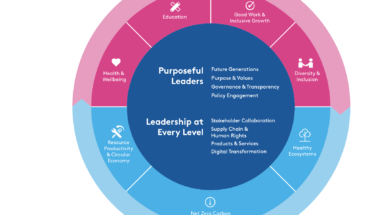From building ships for the seven seas to iconic civil engineering to evolving the UK’s energy sector, Scotland has led the way in industrial innovation, writes Chris Moss
Scotland’s engineering legacy is the envy of many far more populous nations. From James Watt’s pioneeringrole in the industrial revolution to Thomas Telford’s roads, bridges and canals in the Highlands to the Clyde shipwrights who gave the world the QE2 and the Queen Mary, Scottish engineering achievements have made a global impact.
The discovery of North Sea oil in the 1970srevolutionised structural and civil engineering.Innovations like the tension-leg platform built in 1984 for the Hutton oilfield continue to serve as atemplate for design engineers.Energy remains a key sector with the continuing exploitation of recoverable crude oil as well as renewable schemes such as the LIMPET (Land Installed Marine Power Energy Transformer)energy converter installed off the island of Islay and the scheme to create one of the world’s largest onshore windfarms at Barvas Moor on the Hebridean island of Lewis. Renewable energy sources currently provide Scotland with 35 per cent of its electricity production.
The Scottish energy sector is alsobusy upgrading existing assets to make them greener and more efficient. Rhead Group, principal contractor on a number of emissions-reduction projects (ERP) for the National Grid, is replacing the ageing fleet of gas-driven compressors with more modern, energy-efficient electric alternatives at Hatton, Kirriemuir and St Fergus. The target is to cut overall emissions of nitrogen oxides, carbon monoxide and carbon dioxide by more than 15 per cent, 20 per cent and 25 per cent respectively.
David Martin, Rhead Group’s head of Design Assurance, says the work is challenging at every level.
“The commissioning stage of a project such as St Fergus can be one of the most challenging as unforeseen issues often arise. These require a team of skilled, multi-discipline personnel to be available to address them to minimise potential impact to the programme and the availability of the equipment.
“But working on a live terminal also provides plenty of rewards. Issues need to be dealt with quickly as the terminal must run continuously – this in itself creates an environment for innovation. As a company and as individuals we know we’re making a difference.”
The upgrades, he says, involve a range of specialisms and depend on very close collaboration.
“The projects have faced a number of technical challenges along the way as a direct result of the use of new technology and the compatibility with the existing electrical infrastructure. They are multi-disciplined in every sense, and we have a dedicated design team consisting of highly skilled process, mechanical, civil, HV [High Voltage] and LV [Low Voltage], electrical, control and instrumentation and software engineers.”
Rhead Group, which recently won a human resources award for the ERP work, is also involved in developing carbon capture and storage schemes for the UK Government, technologies for Smart Grids and so-called Waste to Energy systems that can produce energy from waste and other fuels without direct combustion.
“With the environmental and commercial challenges we face as both individuals and as an industry, the opportunity always exists for innovation,” says Martin. “Being involved in projects and technological advancements such as those above make these times and those ahead exciting and rewarding for engineers.”
Carillion’s Scottish operations encompass the design, construction, management and maintenance of facilities and infrastructure for a wide range of customers including Scottish Water, the Ministry of Defence, Scottish Prison Service, Glasgow City Council, Network Rail and the Aberdeen relief road project.
In 2009, the firm established a training centre in Glasgow in partnership with a Scottish training organisation called TIGERS.
“We set up the training centre to support increased building and civil engineering activity and to respond to our clients desire to make a difference to the communities in which we work,” says Chris James, Senior Construction Manager at Carillion.
“More and more we see a demand from the industry to train and develop apprentices for not only present but also future projects.”
Apprentices generally gain experience on two or three construction sites over the duration of their apprenticeship. Recently projects have beenthe Royal Scottish National Opera headguarters, the Edinburgh-Glasgow Improvement Programme for Network Rail and the Faslane Single Living Accommodation works for the Ministry of Defence.
“A range of skills are taught from concreting and paving to scaffolding to drainage, as well as specialised skills required to work towards abrasive wheels or NWH and DOMS water hygiene qualifications,” says James.
“Upon completion of the apprenticeship many progress into specialist areas either working for Carillion or our supply chain in activities such as our rail upgrades”.
The latter is a boom area north of the border. Carillion, in partnership with SPL Powerlines, recently delivered two major electrification projects for Network Rail in Scotland: the Cumbernauld Line and the Rutherglen and Coatbridge (Whifflet) Line.
“The project highlighted the importance of developing new skills for the electrification sector,” says Andy Stocks, Carillion’s Scottish rail contracts director. “With the substantial amounts of electrification taking place across the UK in the near future, the industry needs to address the availability of skilled personnel.”
The demand for engineers shows no signs of abating. While the character and complexities of engineering are always changing, Scotland continues to build on its legacy as a nation of builders and engineers as well as visionaries – not for nothing does the Scots word “makar” mean both “maker” and “poet”.
- Scotland’s engineering heritage - 22nd September 2018
- Sir James Dyson: Q&A - 21st August 2018
- Construction Update - 20th August 2018






